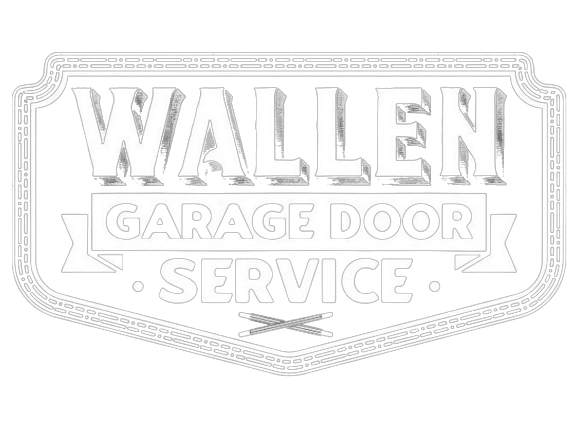A garage door that won’t close can be a frustrating issue, especially when you’re in a hurry. Whether it’s late at night or you’re rushing to work, the inconvenience of a malfunctioning garage door is enough to disrupt your day. But don’t worry—this guide will walk you through common problems and their solutions when your garage door won’t close.
In many cases, a garage door not closing is a fixable problem, and you don’t always need to call a professional. From sensor alignment issues to obstructions in the track, we’ll explore various reasons why your garage door might be stuck and how you can resolve them quickly and effectively.

Common Reasons Why Your Garage Door Won’t Close
1. Blocked Sensors
The most common reason for a garage door that won’t close is that the safety sensors are blocked or misaligned. These sensors are located near the bottom of the garage door tracks and prevent the door from closing if an object is in the way.
Solution:
Inspect the sensors to ensure they are clear of any debris or objects. Clean them with a soft cloth, and make sure they are aligned properly. The sensors should be pointing directly at each other with a clear path between them.
2. Track Obstructions
Another reason your garage door may not close is that something is blocking the track. Dirt, debris, or small objects can obstruct the path of the door, preventing it from moving smoothly.
Solution:
Carefully inspect the tracks on both sides of the door. Remove any debris, rocks, or objects that may have fallen into the track. If you notice any dents or bends in the track, it may need to be repaired or replaced.
3. Faulty Garage Door Opener
Sometimes the issue is with the garage door opener itself. If the opener’s settings have been tampered with or if it’s experiencing a technical glitch, the door may not respond correctly.
Solution:
Check the settings on your garage door opener, and reset it if necessary. You can also try unplugging the opener for a few minutes to reset the system. If this doesn’t work, consult your garage door opener’s manual for troubleshooting steps or contact a professional.
4. Broken Springs
A more serious problem could be a broken garage door spring. The springs are responsible for balancing the weight of the door, and if one or both springs break, the door may not close properly.
Solution:
If you suspect a broken spring, do not attempt to repair it yourself. Broken springs can be dangerous and require professional assistance. Contact a garage door specialist to replace the springs safely.
5. Remote Control Issues
Sometimes, the problem isn’t with the door or the opener but with the remote control itself. Dead batteries, signal interference, or pairing issues could prevent the garage door from responding.
Solution:
Check the batteries in your remote control, and replace them if necessary. If the remote still isn’t working, try reprogramming it by following the instructions in your garage door opener’s manual.

How to Troubleshoot a Garage Door That Won’t Close
A garage door that won’t close can be frustrating, especially when you’re in a hurry or need to secure your home. Thankfully, most issues can be resolved with a systematic approach. Below is an expanded step-by-step guide to troubleshoot the problem.
Step 1: Check for Obstructions
Start by inspecting the area around the garage door and inside the garage. Even a small object like a rock, piece of wood, or loose tool can prevent the door from closing properly.
- Thorough inspection: Walk around and check both the inside and outside of the door for anything that might be blocking its path.
- Look closely at the door tracks: Check if any debris is stuck in the tracks where the door runs. Also, check if there’s anything caught between the panels or along the threshold.
- Clear the area: Make sure to remove all obstacles, including items close to the safety sensors. Even a partially blocked sensor will stop the door from operating.
Step 2: Inspect the Safety Sensors
Garage doors are equipped with safety sensors, usually positioned on both sides of the door, about 6 inches from the floor. These sensors are responsible for detecting objects in the door’s path and preventing the door from closing to avoid accidents.
- Sensor alignment: Inspect the sensors to make sure they are properly aligned with each other. If one sensor is slightly out of alignment, the door won’t close. Most sensors have a small indicator light. If the lights are blinking or off, the sensors are likely misaligned.
- Clean the sensors: Dust, dirt, or spider webs can obstruct the sensor’s view, causing malfunction. Gently clean the lenses with a dry cloth to ensure they are free from debris.
- Check for wiring issues: If the sensors are clean and aligned, but the issue persists, examine the wiring for frays or disconnections. Damaged wires will need professional repair.
Step 3: Test the Remote Control
Sometimes, the issue isn’t with the door itself but with the remote control that operates it. A weak or unresponsive remote could be the culprit.
- Replace the batteries: A simple battery replacement might fix the problem. Even if the remote works intermittently, weak batteries can reduce its range and affect performance.
- Reprogram the remote: If changing the batteries doesn’t help, the remote may have lost its connection with the opener. Consult your garage door opener’s manual for instructions on how to reprogram the remote to sync it with the opener system.
- Test the wall-mounted control: If your garage door has a wall-mounted button, test whether the door closes with that control. If the wall-mounted button works but the remote does not, it indicates an issue specifically with the remote or its programming.
Step 4: Examine the Tracks and Springs
Mechanical issues can also prevent a garage door from closing, especially if there is wear and tear on components like the tracks or springs.
- Check the tracks: Visually inspect the garage door tracks for bends, dents, or any kind of damage. Misaligned or obstructed tracks can prevent the door from moving smoothly. Clear any debris, and ensure the tracks are properly aligned.
- Look at the springs: Garage door springs are under a lot of tension and are crucial for lifting and lowering the door. If the springs are broken or overstretched, the door will likely not function properly. Never attempt to repair or replace springs on your own, as they can be dangerous. Contact a professional to handle spring repairs.
- Rollers and hinges: While you’re inspecting the tracks, check the door rollers and hinges for signs of wear or damage. Lubricating the rollers and hinges with a garage door lubricant can help the door open and close more smoothly.
Step 5: Reset the Garage Door Opener
If none of the previous steps resolve the issue, resetting the garage door opener may help to clear any glitches in the system.
- Unplug the opener: Disconnect the garage door opener from the power source by unplugging it. Leave it unplugged for at least 5 minutes.
- Plug it back in: After waiting, plug the opener back in and try operating the door again. This reboot can often resolve minor technical problems with the opener.
- Check the manual for reset instructions: Some garage door openers have a specific reset button or process. Consult the manual for your model to perform a full system reset.
By following these troubleshooting steps, you can usually identify the issue and either fix it yourself or decide if it’s time to call a professional for help.

Preventing Future Issues With Your Garage Door
To avoid the frustration of a malfunctioning garage door, regular maintenance is essential. By staying proactive, you can ensure your garage door remains in good working order and avoid costly repairs. Here are some preventive measures you can take to keep your garage door functioning smoothly:
- Clean and Align Safety Sensors: Garage doors rely on sensors to detect obstructions and prevent accidents. Over time, dust, dirt, and cobwebs can accumulate, blocking the sensors’ beam and causing the door to malfunction. Make it a habit to clean the sensors regularly with a soft cloth and ensure they remain properly aligned. Misaligned sensors can prevent your garage door from closing or cause it to reverse unexpectedly.
- Lubricate Moving Parts: Friction can cause wear and tear on the moving parts of your garage door, leading to noisy or jerky operation. To prevent this, lubricate the rollers, hinges, and tracks every few months with a silicone-based lubricant. This will keep the door running smoothly and quietly, extending the lifespan of these components.
- Inspect Tracks for Damage: The tracks that guide your garage door are critical to its smooth operation. Periodically check them for signs of damage, such as dents, bends, or rust. If you notice any issues, address them immediately. Small problems, like a minor bend, can grow into more significant issues that cause the door to become stuck or misaligned.
- Replace Remote Control Batteries: One often overlooked aspect of garage door maintenance is the remote control. Weak or dead batteries can lead to intermittent operation or complete failure. Replace the batteries in your remote controls as needed, and keep spares on hand for convenience. This simple step ensures reliable access to your garage whenever you need it.
- Schedule Annual Professional Maintenance: While regular DIY maintenance is essential, it’s also wise to have a professional garage door technician perform a thorough inspection once a year. A specialist can identify potential problems, such as worn-out springs, cables, or motor issues, and address them before they lead to more severe malfunctions. Professional tune-ups also ensure your door’s safety mechanisms are working properly, reducing the risk of accidents.
By following these preventive measures, you can keep your garage door in top shape, ensuring it operates smoothly and reliably for years to come. Regular maintenance not only helps avoid costly repairs but also enhances the safety and convenience of your garage door system.
When to Call a Professional
While many garage door repair issues, like doors that won’t close, can be resolved with basic troubleshooting, some problems require professional intervention. If you’re dealing with broken springs, damaged tracks, or persistent issues that you can’t fix, it’s best to contact a garage door repair expert.
FAQs About Garage Door Won’t Close
1. Why is my garage door not closing all the way?
This is often due to misaligned sensors, dirty tracks, or a problem with the garage door opener. Check for obstructions, and inspect the sensors and tracks for any signs of damage.
2. Can I manually close my garage door if it won’t close automatically?
Yes, you can close the door manually by disengaging the automatic opener using the emergency release cord. This allows you to open or close the door without the opener’s assistance.
3. Why does my garage door close halfway and then reverse?
This is usually a sensor issue. The safety sensors may be detecting an obstruction, or they could be misaligned. Make sure the sensors are clean and properly aligned.
4. How do I know if my garage door springs are broken?
If your new garage door feels unusually heavy when you try to lift it manually, or if it slams shut, the springs may be broken. Contact a professional to inspect and replace the springs.
5. What should I do if my garage door opener won’t respond?
Start by checking the batteries in your remote control. If the batteries are fine, try resetting the opener by unplugging it for a few minutes and then plugging it back in. If the problem persists, you may need to consult the manual or contact a professional.
Conclusion
Dealing with a garage door that won’t close can be stressful, but with the right troubleshooting steps, you can often fix the problem yourself. By understanding the common reasons why garage doors malfunction, such as blocked sensors, faulty openers, or damaged tracks, you can quickly identify the issue and take the appropriate action.
If you’re unsure or the problem requires a professional touch, don’t hesitate to call for expert assistance. Regular maintenance and being aware of potential issues can also help prevent garage door problems in the future.
If you’re still facing trouble with your garage door or need a reliable service for repairs, Wallen Garage Door is here to help. We offer expert garage door services, including repair, installation, and maintenance, to ensure your garage door operates smoothly and safely. Don’t let a malfunctioning garage door disrupt your day—contact us today for fast, efficient service!
End Note
Wallen Garage Door believes in quality from start to finish. Our work is a testament to our core values – solid, ethical, and characterized by professional workmanship. Whether you’re looking for repairs, new installations, or regular maintenance, we’ve got you covered. Visit our About Us page to learn more about who we are, or explore our Gallery for some of our past projects. For tips, check out our Blog, and if you’re ready to upgrade, explore our Residential Garage Doors or Commercial Garage Doors services. Find us on Pinterest, Facebook, or Instagram for inspiration and ideas. Don’t forget to check our Service Areas or use our Amarr Door Designer to start your garage door transformation journey today.







